Jeep Avenger vs Tesla Model 3 – Which model is better for everyday use?
Both models have their strengths – but which one suits you more?
Compare performance, efficiency, price and space directly: Jeep Avenger or Tesla Model 3?
Costs and Efficiency:
Price and efficiency are key factors when choosing a car – and this is often where the real differences emerge.
Jeep Avenger has a decisively advantage in terms of price – it starts at 21900 £, while the Tesla Model 3 costs 34300 £. That’s a price difference of around 12335 £.
In terms of energy consumption, the advantage goes to the Tesla Model 3: with 13.20 kWh per 100 km, it’s a bit more efficient than the Jeep Avenger with 15.50 kWh. That’s a difference of about 2.30 kWh.
As for range, the Tesla Model 3 performs significantly better – achieving up to 750 km, about 350 km more than the Jeep Avenger.
Engine and Performance:
Power, torque and acceleration say a lot about how a car feels on the road. This is where you see which model delivers more driving dynamics.
When it comes to engine power, the Tesla Model 3 has a clearly edge – offering 460 HP compared to 156 HP. That’s roughly 304 HP more horsepower.
In acceleration from 0 to 100 km/h, the Tesla Model 3 is significantly quicker – completing the sprint in 3.10 s, while the Jeep Avenger takes 9 s. That’s about 5.90 s faster.
In terms of top speed, the Tesla Model 3 performs distinct better – reaching 262 km/h, while the Jeep Avenger tops out at 194 km/h. The difference is around 68 km/h.
There’s also a difference in torque: Tesla Model 3 pulls clearly stronger with 660 Nm compared to 260 Nm. That’s about 400 Nm difference.
Space and Everyday Use:
Cabin size, boot volume and payload all play a role in everyday practicality. Here, comfort and flexibility make the difference.
Both vehicles offer seating for 5 people.
In curb weight, Jeep Avenger is convincingly lighter – 1180 kg compared to 1822 kg. The difference is around 642 kg.
In terms of boot space, the Tesla Model 3 offers clearly perceptible more room – 594 L compared to 380 L. That’s a difference of about 214 L.
When it comes to payload, Jeep Avenger evident takes the win – 502 kg compared to 333 kg. That’s a difference of about 169 kg.
Who comes out on top?
Overall, the Tesla Model 3 shows itself to be leaves the rival little chance and secures the title of DriveDuel Champion.
It convinces with the more balanced overall package and proves to be the more versatile choice for everyday use.
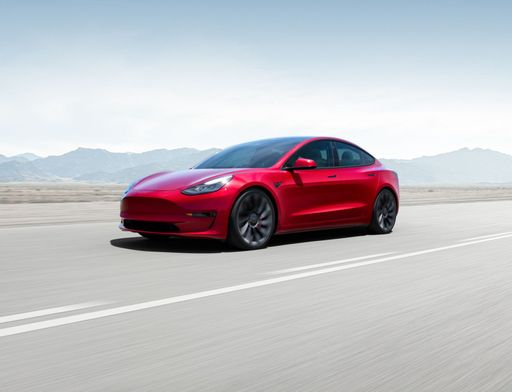 @ Tesla, Inc.
@ Tesla, Inc.
Tesla Model 3
Jeep Avenger
The Jeep Avenger shrinks Jeep's boxy, adventurous styling into a city-friendly electric crossover that looks just as at home on tight streets as it does on muddy weekend lanes. It's a savvy pick for drivers who want go-anywhere attitude without the truck-size ego — practical inside, lively around town and ready to tackle a bit of rough stuff when the mood strikes.
details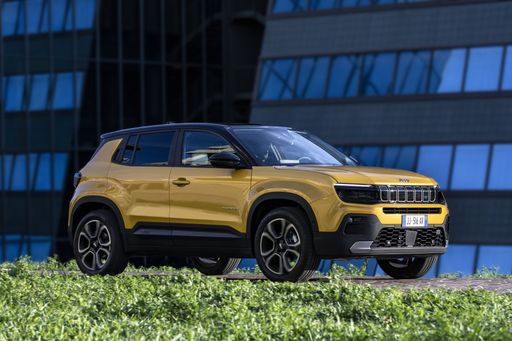 @ Jeep / Stellantis Media
@ Jeep / Stellantis Media
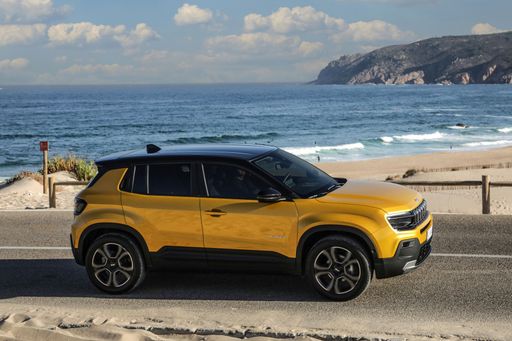 @ Jeep / Stellantis Media
@ Jeep / Stellantis Media
 @ Jeep / Stellantis Media
@ Jeep / Stellantis Media
 @ Jeep / Stellantis Media
@ Jeep / Stellantis Media
 @ Jeep / Stellantis Media
@ Jeep / Stellantis Media
Tesla Model 3
The Tesla Model 3 slices through daily commuting with a silent, confident shove that makes petrolheads reassess their life choices, while its minimalist cabin feels more like a slick gadget gallery than a traditional car interior. For buyers after a fuss-free, tech-forward electric with plenty of grin factor and low running drama, it’s hard to beat—just don't be surprised when the car updates itself overnight.
details @ Tesla, Inc.
@ Tesla, Inc.
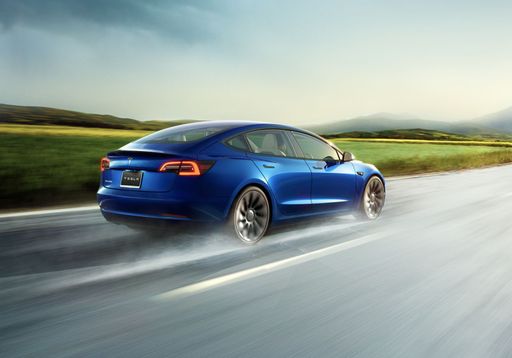 @ Tesla, Inc.
@ Tesla, Inc.
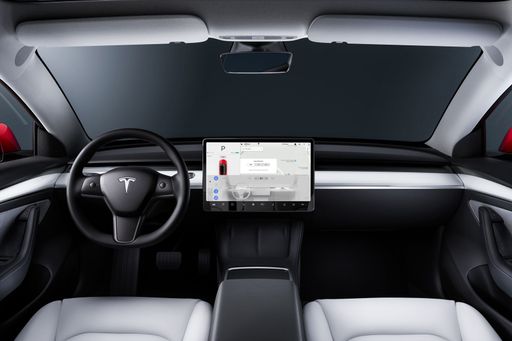 @ Tesla, Inc.
@ Tesla, Inc.
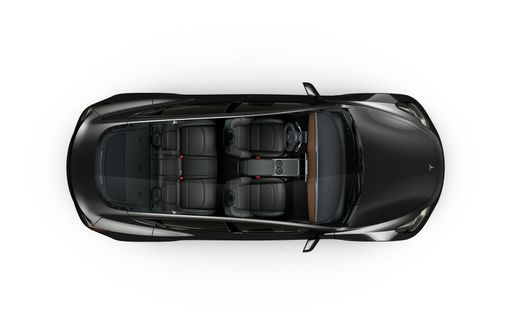 @ Tesla, Inc.
@ Tesla, Inc.
 @ Jeep / Stellantis Media
@ Jeep / Stellantis Media
|
 @ Tesla, Inc.
@ Tesla, Inc.
|
|
|
|
Costs and Consumption |
|
|---|---|
|
Price
21900 - 36900 £
|
Price
34300 - 50100 £
|
|
Consumption L/100km
4.9 - 5.7 L
|
Consumption L/100km
-
|
|
Consumption kWh/100km
15.50 kWh
|
Consumption kWh/100km
13.2 - 16.7 kWh
|
|
Electric Range
400 km
|
Electric Range
550 - 750 km
|
|
Battery Capacity
51 kWh
|
Battery Capacity
64.5 - 83 kWh
|
|
co2
0 - 129 g/km
|
co2
0 g/km
|
|
Fuel tank capacity
44 L
|
Fuel tank capacity
-
|
Dimensions and Body |
|
|---|---|
|
Body Type
SUV
|
Body Type
Sedan
|
|
Seats
5
|
Seats
5
|
|
Doors
5
|
Doors
4
|
|
Curb weight
1180 - 1520 kg
|
Curb weight
1822 - 1929 kg
|
|
Trunk capacity
325 - 380 L
|
Trunk capacity
594 L
|
|
Length
4084 - 4088 mm
|
Length
4720 - 4724 mm
|
|
Width
1776 mm
|
Width
1850 mm
|
|
Height
1527 - 1541 mm
|
Height
1431 - 1440 mm
|
|
Max trunk capacity
1218 - 1277 L
|
Max trunk capacity
-
|
|
Payload
494 - 502 kg
|
Payload
303 - 333 kg
|
Engine and Performance |
|
|---|---|
|
Engine Type
Electric, Petrol, Petrol MHEV
|
Engine Type
Electric
|
|
Transmission
Automatic, Manuel
|
Transmission
Automatic
|
|
Transmission Detail
Reduction Gearbox, Manual Gearbox, Dual-Clutch Automatic
|
Transmission Detail
Reduction Gearbox
|
|
Drive Type
Front-Wheel Drive, All-Wheel Drive
|
Drive Type
Rear-Wheel Drive, All-Wheel Drive
|
|
Power HP
100 - 156 HP
|
Power HP
283 - 460 HP
|
|
Acceleration 0-100km/h
9 - 10.6 s
|
Acceleration 0-100km/h
3.1 - 6.1 s
|
|
Max Speed
150 - 194 km/h
|
Max Speed
201 - 262 km/h
|
|
Torque
205 - 260 Nm
|
Torque
420 - 660 Nm
|
|
Number of Cylinders
3
|
Number of Cylinders
-
|
|
Power kW
74 - 115 kW
|
Power kW
208 - 338 kW
|
|
Engine capacity
1199 cm3
|
Engine capacity
-
|
General |
|
|---|---|
|
Model Year
2023 - 2025
|
Model Year
2025
|
|
CO2 Efficiency Class
A, D, C
|
CO2 Efficiency Class
A
|
|
Brand
Jeep
|
Brand
Tesla
|
What drivetrain options does the Jeep Avenger have?
Available configurations include Front-Wheel Drive or All-Wheel Drive.
The prices and data displayed are estimates based on German list prices and may vary by country. This information is not legally binding.
